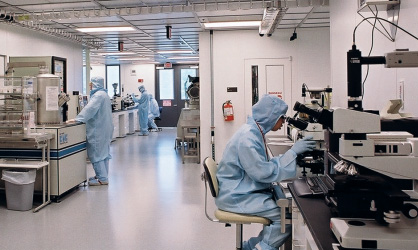As the National Nanotechnology Infrastructure Network (NNIN) approaches the end of its initial 10 year term, it has clearly supported and catalyzed the growth of nanotechnology-enabled products. The NNIN user facilities have provided a key national resource where academic and industry researchers are able to access a wide range of state of the art fabrication processes and equipment to demonstrate proof of concept or prototype device technologies. In many instances, the NNIN serves to incubate innovation by enabling early stage R&D activities that otherwise may not be possible due to resource limitations, particularly for small companies. As the model for a Next Generation Nanotechnology Infrastructure (NG-NI) is being developed to accommodate emerging nanomanufacturing methods, materials, and progress towards nanoscale systems, the National Science Foundation (NSF) and other stakeholders are contemplating what capabilities should included in order to continue and accelerate the development of nanotechnology-enabled products, and further expand the innovation pipeline.

- Facilities capable of supporting the translation of discovery into prototypical elements suitable for evaluation of manufacturability and proof of business concept.
- Partnerships with industry, government, and other groups to provide specialized capabilities within the network when warranted. The network will also include linkages with other networks and federal infrastructure investments, such as facilities at NIST and DOE.
Expansion of the NG-NI to emphasize these areas will enable emerging nanomanufacturing processes to be scaled and demonstrated for manufacturing platforms meaningful to industry, while further building the necessary infrastructure to expand to manufacturing platform. Examples of the latter include engaging equipment and tool vendors, the materials supply chain, and the end-customer at early stages of prototype development to establish roadmaps for nano-enabled products. In addition, the NG-NI will now emphasize many emerging nanomanufacturing methodologies, including directed self-assembly, nanoimprint patterning, soft matter, biomanufacturing, and compositional materials. Addition of such capabilities will definitely broaden the scope and user base for the network.
NSF is currently seeking network proposals to build the Next-Generation National Nanotechnology Infrastructure. Letters of Intent are due April 1, 2013, and the Full Proposal Deadline is May 13, 2013.
